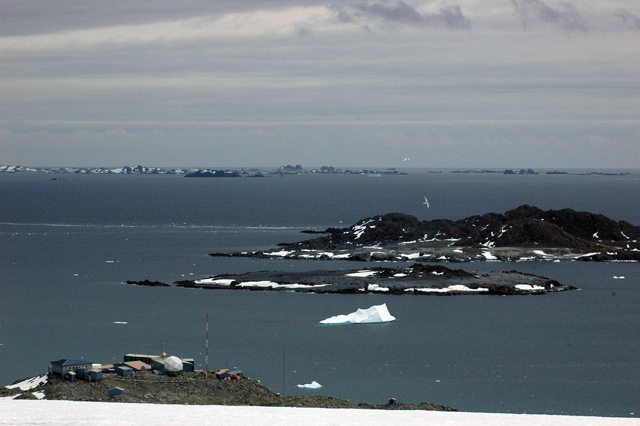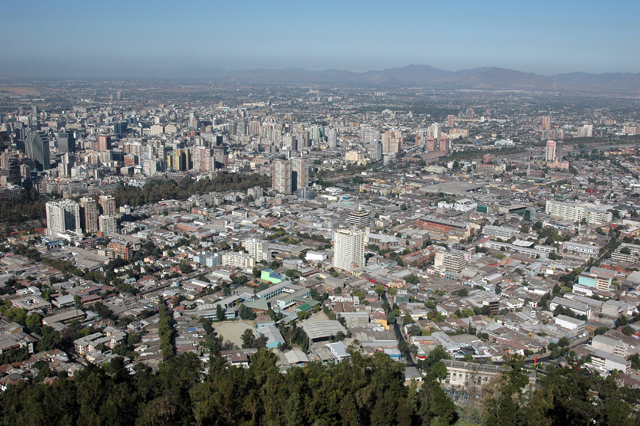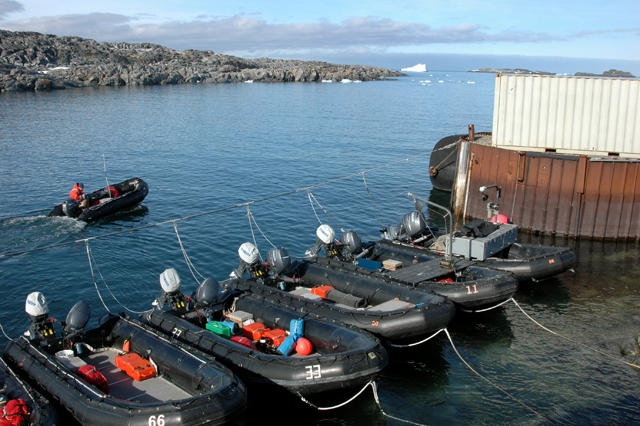Not shakenUSAP personnel respond quickly to Chilean earthquake to minimize impact to sciencePosted March 5, 2010
The powerful 8.8-magnitude earthquake that struck central Chile early Saturday morning, Feb. 27, and spawned tsunami warnings as far as Hawaii did not affect any of the U.S. Antarctic Program (USAP) However, ongoing disruptions to Chilean infrastructure and transportation may affect a science cruise aboard the RVIB Nathaniel B. Palmer Tom Ellis, director of Operations for Raytheon Polar Services Co. (RPSC) “We are working the contingencies and options not only through the weekend but on a daily basis because new information becomes available as each day goes by. It is an ongoing and continually changing situation,” Ellis said. “We’re doing everything we can to minimize the impact to science.” USAP officials said the ship may be delayed until March 16. The Palmer is scheduled to support a nearly two-month cruise along the western coast of the Antarctic Peninsula to investigate the disappearance of Pleuragramma antarcticum, the Antarctic silverfish, from the Adélie penguin diet over the last decade. The scientists believe the silverfish is disappearing in step with the decline of sea ice in the region. Several USAP personnel and scientists in the United States were scheduled to fly to South America on Sunday in connection with the project. However, no one was on the ground in Chile at the time of the earthquake. Chilean company AGUNSA, contracted by the USAP to handle logistics, has offices in Punta Arenas and Santiago. None of the buildings suffered any structural damage, but the 15th-floor office in downtown Santiago lost air conditioning, according to Bob Farrell, Palmer Area director. The Palmer returned to Punta Arenas on March 1 after a two-month science cruise in support of the International Polar Year program called LARISSA, for LARsen Ice Shelf System, Antarctica Ship personnel and scientists were expected to spend extra time aboard the ship before people started heading north because of the current travel situation in Chile. Punta Arenas is more than 2,000 kilometers from Santiago, and reportedly neither the earthquake nor its aftereffects touched Chile’s southernmost city. The quake did shut down the country’s gateway airport in Santiago for several days. The airport suffered major damage, including smashed windows, partially collapsed ceilings and destroyed pedestrian walkways in the passenger terminals, according to online reports. About 800 people were killed in the earthquake, which lasted for about three minutes. Shortly after the quake hit south of Santiago, Ellis said he was notified, and the word went out to the research stations and both research vessels, which were at sea in deep waters at the time. A tsunami wave requires a shallow coastal shelf to build in size and strength. “Everybody went on alert,” Ellis said. Palmer Station Palmer personnel developed a tsunami emergency plan following the 2004 earthquake in the Indian Ocean that created a tsunami that killed more than 230,000 people in 14 countries. While no noticeable tsunami occurred at Palmer, the station tide monitor displayed bumps of several centimeters, signifying that a small wave had indeed reached the shores of Anvers Island. In an interesting scientific side note to the story, a NASA Jet Propulsion Laboratory Jon Brack at Palmer Station contributed to this report.
|



For USAP Participants |
For The Public |
For Researchers and EducatorsContact UsU.S. National Science FoundationOffice of Polar Programs Geosciences Directorate 2415 Eisenhower Avenue, Suite W7100 Alexandria, VA 22314 Sign up for the NSF Office of Polar Programs newsletter and events. Feedback Form |




